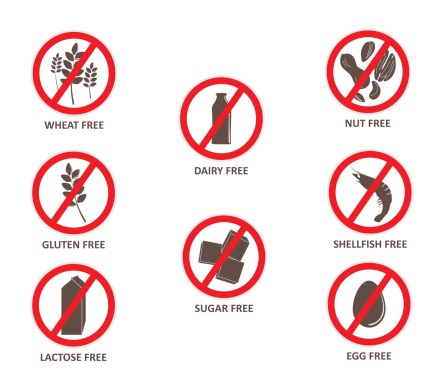6 dining tips for those with food allergies

If you suffer from food allergies, you pay close attention to meal preparation at home, making sure that you don’t use anything that will cause an allergic reaction. But what about when you go out to eat and you can’t see a list of ingredients or preparation?
Dr. Newton Li, an allergy/immunology physician for Advocate Dreyer Medical Clinic, has six tips for food allergy sufferers while eating out:
- Reactions often occur from food allergens in “hidden” ingredients and in desserts.
- For example some hot dogs contain milk and Worcestershire sauce may contain anchovies (fish). Also, accidental allergic reactions are often caused by desserts. So proceed with caution when ordering these sweet treats.
- Use caution at buffets and bakeries as well as Asian and Mexican restaurants.
- Buffets provide an additional risk due to the lack of labeling of ingredients, proximity of foods to each other and interchanging of serving utensils between food receptacles. The same risk of cross-contamination due to shared equipment or utensils also occurs in ice cream shops and bakery displays.
- Peanut/tree nuts are common in Asian and Mexican dishes so even if you order a food without these ingredients there is a risk of cross-contamination with these foods during cooking or meal preparation.
- Order simply prepared foods.
- Consider ordering foods that are prepared with a single ingredient such as broiled meat entrees or steamed vegetables which can potentially decrease the risk of ingesting a hidden allergenic ingredient. Avoid sauces, desserts, foods prepared in a pastry covering such as pot pies, stews, and fried foods. It is common in the food industry to cook several foods in the same fryer, which increases the risk of cross-contamination.
- Be proactive and do not assume food is prepared safely.
- Servers and restaurant managers often are not always educated about food allergies. They are not always aware of food safeties and requirements for removing allergens. So it is important to ask detailed questions about ingredients and ask for advice on selecting menu items. If the staff appears unsure, it may be best to dine elsewhere.
- Consider carrying a personalized “chef card.”
- Create a “chef card” that displays specific food allergies, the severity of reactions, and key ingredients that must be avoided. This card, which can be the size of a business card and laminated, should be presented to the restaurant manager and/or chef to review before the meal is ordered.
- Most importantly, bring your epinephrine autoinjector device (EpiPen) when dining out.
While preparing a meal at home guarantees that you avoid exposure to foods you are allergic to, with a little bit of caution dining out can be an enjoyable experience as well.
Related Posts
Comments
6 Comments
About the Author
health enews staff is a group of experienced writers from our Advocate Health Care and Aurora Health Care sites, which also includes freelance or intern writers.


















I didn’t realize that buffets and Asian or Mexican food places were such a high risk for people with allergies. I understand a bit more with buffets, since there’s a potential for cross-contamination and, as you said, a lack of labeled ingredients. I didn’t know that so many Asian and Mexican dishes used tree nuts, though. Thanks for the info; I’ll keep that in mind when treating a friend with allergies to a meal.
Thanks for the tip that reactions often occur from food allergens in hidden ingredients as well as desserts. You also said that it’s good to use simply prepared foods. I think it’s a good idea to choose an Asian restaurant that has all of their ingredients listed out.
I really like your advice to eat simply prepared food. I think that a lot of people don’t understand how many things are in their sauces and things like that. Sure, bland foods may not be that tasty, but at least you’ll know what you’re getting. Do you have any other tips about eating good food if you have allergies?
I love the tip you gave about making sure to ask detailed questions about the ingredients of food so that you can know what it contains. I’ve heard that the majority of restaurants will have a special area where any food that’s ordered with food allergy requests can be prepared safely away from other foods. I’ll be sure to remember these awesome tips for the next time we go to eat out with my little son who is allergic to dairy.
Considering how dangerous food allergies can be you always want to be cautious. I especially love that the article reminds readers to be extra careful at bakeries and buffets. However, no matter how careful they are it still might help to have an allergy clinic on speed dial.
Ask detailed questions, you say? Here are some actual conversations I have had with wait staff:
-What kind of oil are these fried in?
-It comes in a really big tub.
-I have food allergies. I need to know what the oil was made from.
–.-ten minutes pass—
-It’s vegetable oil. (Uh, what vegetable?)
-Is there soy in the seasoning?
-I don’t think so.
-Does the pie filling have corn starch in it?
-We filed all our ingredient information with the state. You can contact them.
At a restaurant mostly selling pasta dishes:
-Do you have any pasta that doesn’t contain wheat?
-Oh, we don’t use wheat pasta. Nothing like that. (Most of their pasta was, of course, wheat. Some people think “wheat” means “brown.” My niece, who has celiac disease, had a waiter explain to her that white flour is made from flowers.)
You can eat out with food allergies, but you have to take some amount of hassle in stride. It’s usually easier to eat at home.